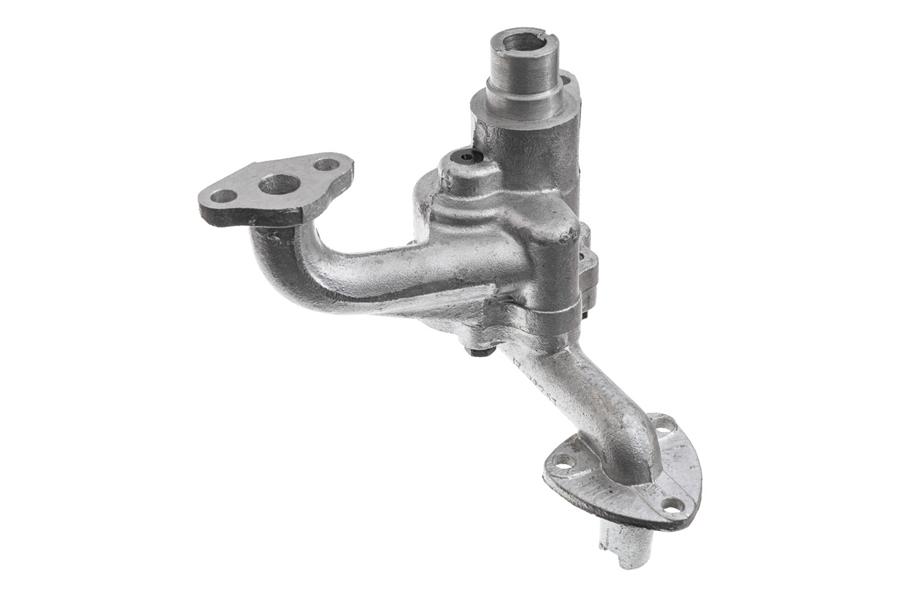re: "... There is a check valve built into the spin-on filter which will ‘air lock’ and not allow the fresh oil to enter the oil pump if the filter is installed before the oil is filled."
Sorry, but this makes no sense to me. The pump is in the sump (

) and will be bathed in oil when it's filled whether the filter is on or not. With the engine running, the pump will/should pump oil through the filter--under pressure, up to 50PSI or more with a cold engine--and into the upper galleries (some will prime the pump before startup, but I've not heard of a convenient way to do it, at least on Healeys). I have two Healeys with spin-on adapters, I always install the filter before refilling the sump--through the filler cap on the valve cover, from which it drains directly into the sump--and have never had this problem in several dozen oil changes (I usually get full oil pressure within 5 seconds of startup after a change). Every other car I've changed oil on has a spin-on--except the '46 Chevy 2-ton which has no filter at all--and I've never experienced this issue. It's a good idea to pre-fill the filter, if you can, but the spin-ons I use are mounted parallel to the ground, and you can't get much more than half a fill without losing some when you reinstall, so I don't bother. Most spin-ons have an anti-drainback valve made of silicone rubber, which is soft and very pliable, and will not resist oil, moving in the expected direction, under any reasonable pressure.
My first question: Does he have a stock, cartridge-type oil filter? We seem to be assuming he has a spin-on. The stock filters have to be installed 'just so,' and are a real PITA, which is why so many have changed to a spin-on. Filters usually have two 'check valves' installed: One is an overpressure valve that will allow oil to be pumped through an engine--dirty oil is better than no oil, at least in the short run--even if the filter element is plugged, and an anti-drainback valve that keeps at least some oil in the filter to help prevent dry starts.
The thing many owners say to do first is check your oil pressure gauge; when I bought my BJ8 it had little-or-no pressure at idle according to its gauge, then when I had the gauge overhauled I 'gained' 20PSI at idle. I'm no fan of County brand parts (long story), but the fact two pumps have (unspecified) issues leads me to believe there's more or other issues. Did this problem just start, or has pressure declined over time? Does the pressure fluctuate? Could be a blockage in the galleries; maybe, with at least one shot main bearing the engine is just tired, etc? Need more data.
My dad--a meticulous mechanic--restored a '34 Ford 3-window couple, and had no pressure at first startup. He tore the freshly overhauled engine completely down to make sure nothing was damaged, and discovered he'd neglected to install a necessary gasket between (IIRC) the strainer and the pickup.

 Hi Guest!
Hi Guest!

 smilie in place of the real @
smilie in place of the real @
 Pretty Please - add it to our Events forum(s) and add to the calendar! >>
Pretty Please - add it to our Events forum(s) and add to the calendar! >> 

